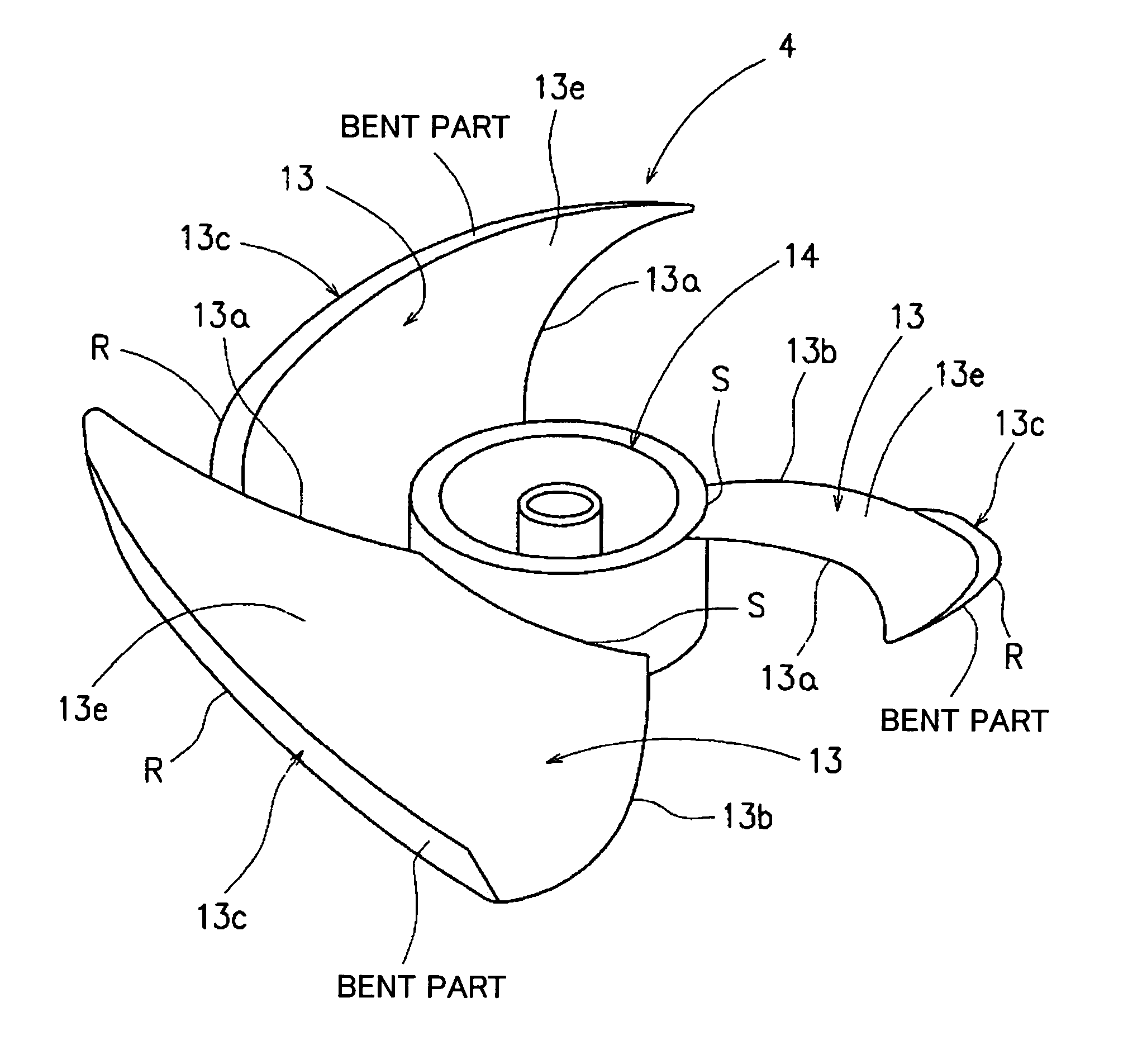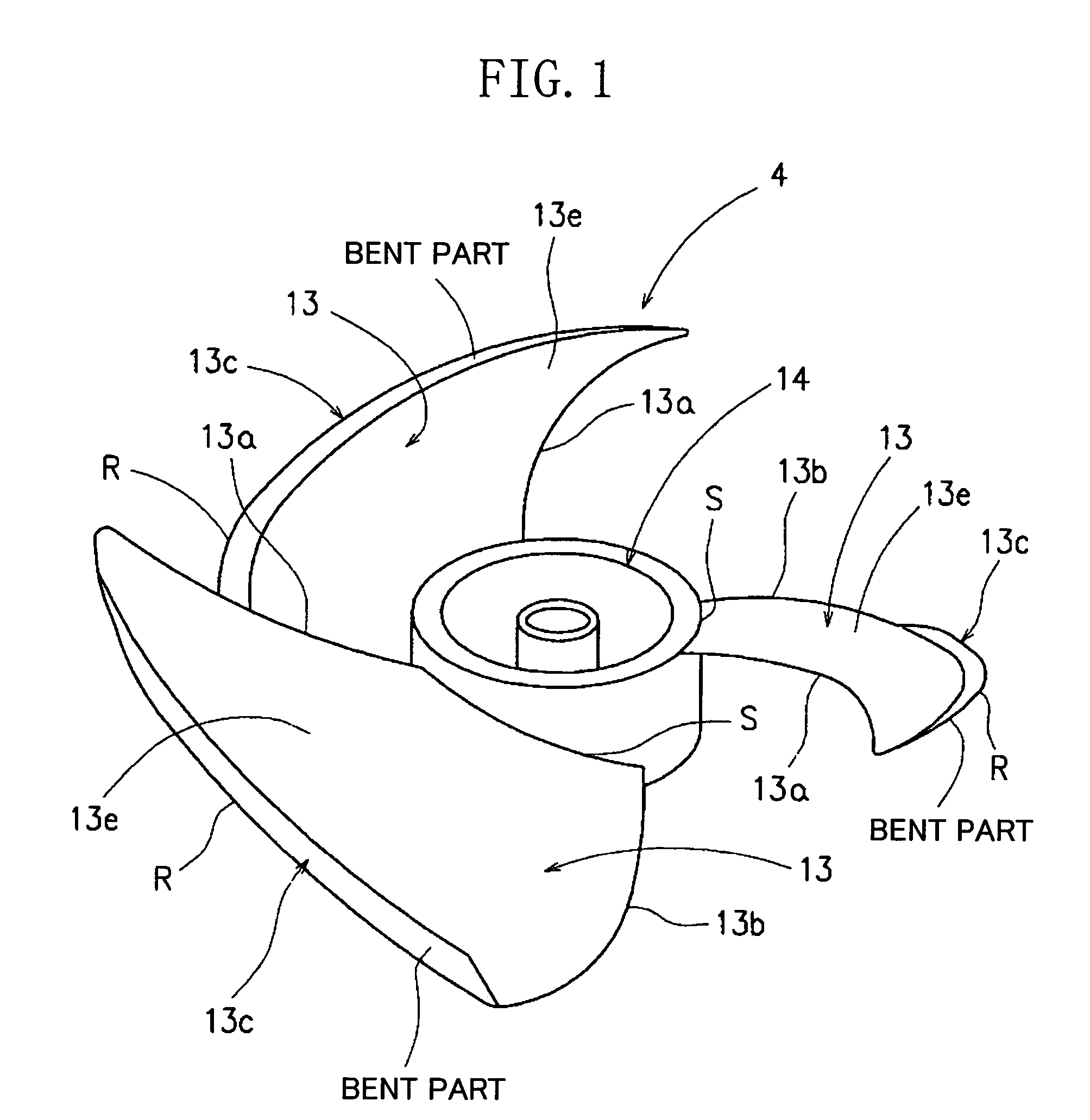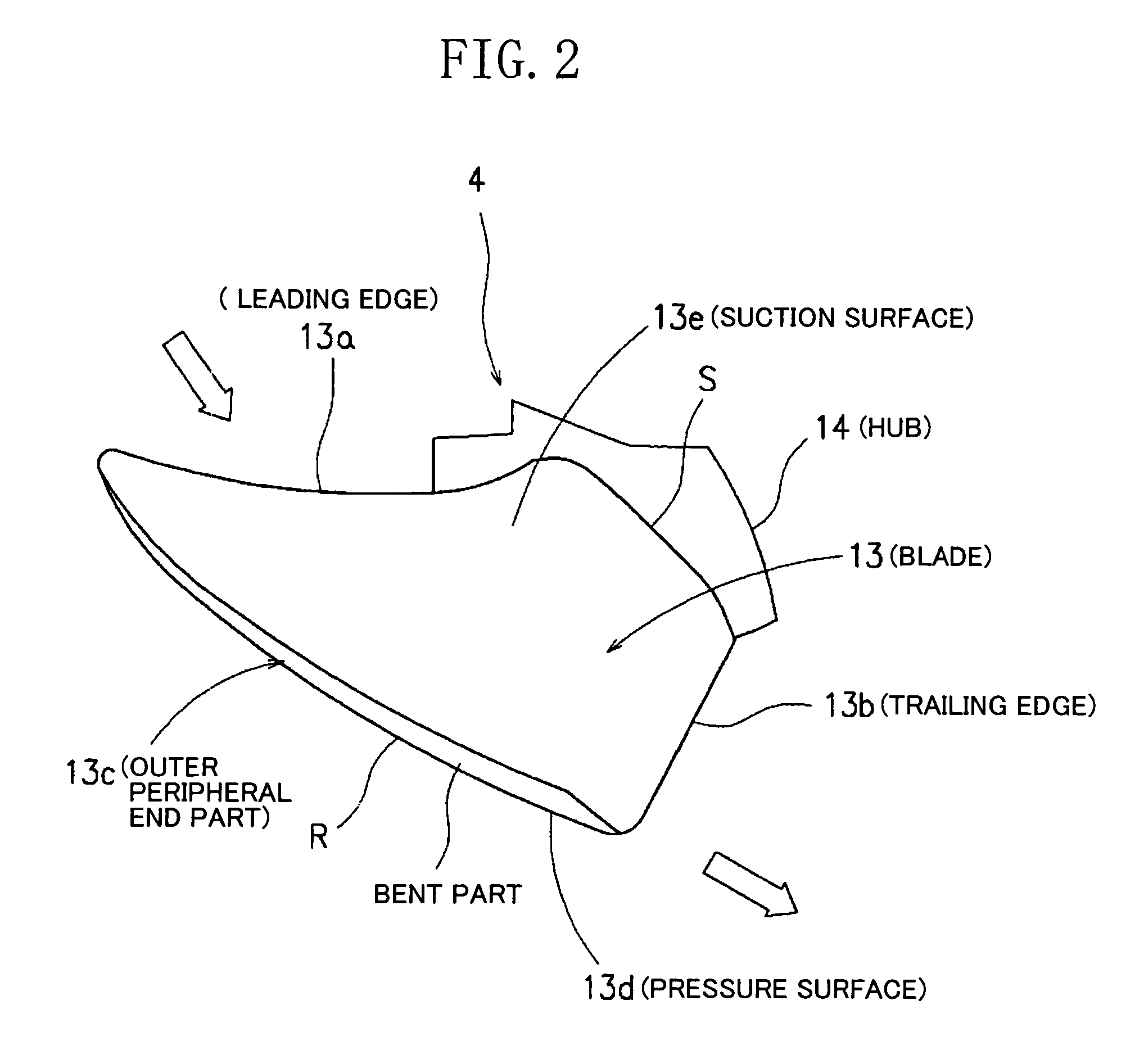Air blower apparatus having blades with outer peripheral bends
a technology of air blower and blade, which is applied in the direction of other chemical processes, heating types, vessel construction, etc., can solve the problems of high noise during operation, inconvenience of outdoor unit construction, and failure of noise reduction methods alone, so as to reduce the noise generated by the air blower apparatus (4) itself, reduce the weight and cost of the blade, and enhance the effect of noise reduction
- Summary
- Abstract
- Description
- Claims
- Application Information
AI Technical Summary
Benefits of technology
Problems solved by technology
Method used
Image
Examples
first embodiment
[0091]FIGS. 1–15 show structures and actions of an air blower apparatus (4) according to a first embodiment of the present invention. The air blower apparatus (4) is a propeller fan that is suitable for use in air conditioning apparatus outdoor units.
[0092]More specifically, FIGS. 1–11 illustrate basic structures and actions of an impeller section of the air blower apparatus (4), and FIGS. 12–15 illustrate shapes of a blade (13) of the impeller section according to several modification examples of the first embodiment.
Basic Structure of Impeller Section
[0093]Referring to FIGS. 1–11, the air blower apparatus (4), which is a propeller fan, has a hub (14) of synthetic resin. The hub (14) is a center of rotation of the air blower apparatus (14), and three identical blades (13, 13, 13) are disposed integrally along an outer peripheral surface of the hub (14).
[0094]The blade (13, 13, 13) has a leading edge (13a) and a trailing edge (13b), wherein both an outer peripheral end (R) of the le...
first modification example
[0129]The shape of the bent part of the outer peripheral part (13c) of the blade (13, 13, 13) is not limited to the above-described linear shape. For example, as shown in FIGS. 12 and 13, the shape of the bent part may be a curved surface formed by curling partially the vicinity of a leading end of the bent part which is approximately linearly formed, i.e., only the vicinity of the outer peripheral end (R), toward the suction side. This enables an air flow to readily enter from the side of the pressure surface (13d) around into the suction surface (13e), thereby reducing the diameter of the blade tip vortex (β) to a further extent.
second modification example
[0130]For example, as shown in FIGS. 14 and 15, the bent part of the blade outer peripheral part (13c) may be approximately S-shaped. More specifically, in this second modification example, the entire shape of the bent part is formed into approximately an S-shape in the following way. A portion positioned ahead of a part (a) bent linearly toward the suction side is rebent toward the side of the pressure surface (13d) to form a blade extension surface (b) and its outer peripheral end (c) is bent toward the suction side, so that the bent part is S-shaped. Also for the case of such a configuration, the blade tip vortex (β) is reduced with effect and, in addition, it is possible to eliminate discharge vortexes from between adjoining blades.
Effects of First Embodiment
[0131]Accordingly, the air blower apparatus (4) of the first embodiment provides the following beneficial effects.
[0132](i) Noise generated by the air blower apparatus (4) itself is reduced, and, in addition, noise when the ...
PUM
 Login to View More
Login to View More Abstract
Description
Claims
Application Information
 Login to View More
Login to View More - R&D
- Intellectual Property
- Life Sciences
- Materials
- Tech Scout
- Unparalleled Data Quality
- Higher Quality Content
- 60% Fewer Hallucinations
Browse by: Latest US Patents, China's latest patents, Technical Efficacy Thesaurus, Application Domain, Technology Topic, Popular Technical Reports.
© 2025 PatSnap. All rights reserved.Legal|Privacy policy|Modern Slavery Act Transparency Statement|Sitemap|About US| Contact US: help@patsnap.com



